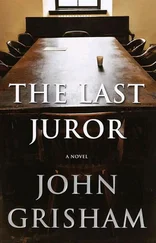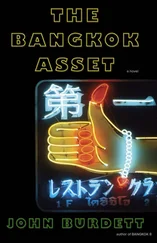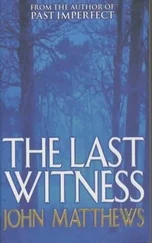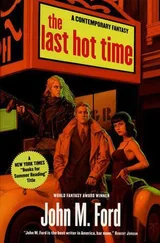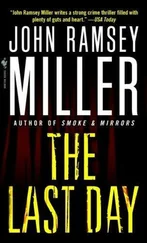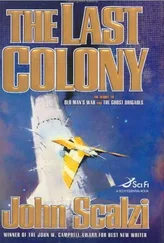John Burdett - The Last Six Million Seconds
Здесь есть возможность читать онлайн «John Burdett - The Last Six Million Seconds» весь текст электронной книги совершенно бесплатно (целиком полную версию без сокращений). В некоторых случаях можно слушать аудио, скачать через торрент в формате fb2 и присутствует краткое содержание. Жанр: Триллер, на английском языке. Описание произведения, (предисловие) а так же отзывы посетителей доступны на портале библиотеки ЛибКат.
- Название:The Last Six Million Seconds
- Автор:
- Жанр:
- Год:неизвестен
- ISBN:нет данных
- Рейтинг книги:4 / 5. Голосов: 1
-
Избранное:Добавить в избранное
- Отзывы:
-
Ваша оценка:
- 80
- 1
- 2
- 3
- 4
- 5
The Last Six Million Seconds: краткое содержание, описание и аннотация
Предлагаем к чтению аннотацию, описание, краткое содержание или предисловие (зависит от того, что написал сам автор книги «The Last Six Million Seconds»). Если вы не нашли необходимую информацию о книге — напишите в комментариях, мы постараемся отыскать её.
The Last Six Million Seconds — читать онлайн бесплатно полную книгу (весь текст) целиком
Ниже представлен текст книги, разбитый по страницам. Система сохранения места последней прочитанной страницы, позволяет с удобством читать онлайн бесплатно книгу «The Last Six Million Seconds», без необходимости каждый раз заново искать на чём Вы остановились. Поставьте закладку, и сможете в любой момент перейти на страницу, на которой закончили чтение.
Интервал:
Закладка:
“See, this is how it works. We rope off the warehouse. We establish only one route to use to and from the scene of the crime. We assign an officer to guard the scene and record all persons coming and going. We photograph and videotape the whole scene. We divide the area into zones; we search each zone. We check doors and windows. Before leaving the area, we make a list of all license plates of vehicles in the area; we obtain the names of all businesses and persons working around here; we interview everyone in the vicinity.”
“You’ve been very thorough.”
“Routine.”
“And what have you come up with so far?”
“Nothing. Except the heads that were spotted at sea-by a tourist.”
“Any theories?”
“The murders took place somewhere else. In Hong Kong or over the border-who knows? With lifting gear and a refrigerated lorry the vat could have come from a thousand miles away.”
Chan and Aston watched Riley walk to one of the far walls, his footfall echoing off the raw concrete. It was like watching someone walk to nowhere from nowhere. When he reached the wall, there was nothing to do but come back again.
“I see,” Riley said.
On the way out Chan looked again at the flickering light and shook his head. Normally he would have checked light fixtures. The stench from the vat had driven everyone to take shortcuts.
After agonizing, Chan slipped home midmorning with the case file. He was glad Moira had gone out. He’d said that she could stay another night-why not? He was hardly ever home. He’d given her a spare set of keys. She’d cleaned the flat during the morning, left a note to say she’d gone for a long walk.
After leaving Riley, he had been to see Dr. Lam. There was no doubt about it: Clare was Polly; Polly was Clare. Chan knew that a brave man would sit down with Moira, put his arm around her, tell her everything, absorb some of her pain.
He placed the file and a large bottle of scotch on the coffee table, left right away.
14
At the identification bureau at Arsenal Street, Chan had no trouble persuading one of the technicians, Raymond Tsim, to give up his lunch break. It was a Chinese deal: Chan would buy and deliver the takeaway noodles and pay two to one on Tsim’s bet that the plastic bag would carry no prints in common with The Travels of Marco Polo.
In the lunchtime crowds Chan knew where he could have Tsim’s noodles in their Styrofoam box under his arm in less than five minutes. But Tsim was particular about his noodles. It was Mimi’s or the deal was off.
Chan didn’t blame him. Mimi’s had all the characteristics of a restaurant the Cantonese respected. The waiters wrote nothing down but remembered the orders with precision. There was a deafening noise of chopsticks on plates, plates being stacked, customers sucking loudly on fish heads and egg yolks. Spittoons on the floor awaited the products of the incessant hoicking that provides background birdsong throughout Asia. The noodles were, quite simply, the best in the world. For every seated customer there was at least one other standing behind him, breathing down his neck and exerting whatever psychological pressure he could devise to make the seated one finish quickly. All over the restaurant taste buds were mercilessly excited by steaming dim sum baskets wheeled around on trolleys by scowling old ladies, who used the spittoons from time to time.
Chan joined the takeaway line and tried to resist the temptation to jump the queue. After five minutes he took advantage of a distraction caused by the collapse of a construction of plates on a trolley near the kitchen. While everyone stared and laughed, he slipped in behind a woman who was about thirty places closer to the front. Even so it was twenty minutes before he returned to the identification bureau with the noodles.
He was disappointed that Tsim had not yet begun the tests. The technician was absorbed in a glossy magazine with airbrushed centerfold. Chan crept silently up to where Tsim sat on a stool at his bench and admired the sensuous lines of the new IBM Thinkpad with Pentium chip, active matrix screen and sixteen megabytes of RAM with a 1.2 gigabyte hard disk.
“Noodles,” Chan shouted in his ear.
In a process that had more in common with inhalation than digestion Tsim finished the noodles in less than eight minutes, burped five times, put away the computer magazine, switched on the terminal by his right hand.
Even a technological Neanderthal like Chan had come to pronounce one acronym with awe: CAFIS. With imported software Chan could use the computer assisted fingerprint indexing system to cross-check in seconds with every print known to central records, a task that in his early years with the RHKPF had taken days with a high risk of error. All you needed was the print from which to start the inquiry.
Here there had been advances too. Dusting powder was still extensively used, but many of its limitations had been overcome through the use of other techniques: the marvelous Magna Brush, the astonishing argon-ion laser, iodide fuming, silver nitrate, ninhydrin and superglue. With each new invention the rate of detection spiked for a while, until the crooks caught up.
With tweezers Tsim lifted the plastic bag (emptied of its contents, which had been sent to the chemists at Arsenal Street) out of the cardboard box that carried the case reference number and Chan’s name. With Chan watching intently by his side, Tsim jammed the top of the bag in a clamp on a small tripod. He lifted the tripod into a glass box the size of a small wardrobe and closed the box door. From outside the box Tsim was able to adjust the focus of the barrel of the laser that was inside. Also inside were a camera that automatically focused with the laser and a metal dish of superglue. With the laser focused Tsim pressed a switch that heated a hot plate under the superglue. Fumes rose and clung to tiny impressions on the plastic bag, which impressions were enhanced by the laser. Tsim pressed another switch, and the camera flashed several times.
The technician peeled a pair of plastic gloves onto his hands, took a small retractable cutter from a drawer and sliced off the cover of The Travels of Marco Polo. Flicking arbitrarily through the thirteenth-century masterpiece, he cut out thumbed pages from the “Prologue,” “The Middle East, Kublai Khan” and “From Peking to Bengal.”
At a chair further along the bench he used Chan’s cigarette lighter to light a small spirit lamp under a glass box. At the bottom of the box was a grill under which iodine crystals had been placed. He opened the lid on the box, inserted the front cover of the book. When violet fumes rose from the grill, Tsim blew out the spirit lamp. Chan watched while fatty matter absorbed some of the fumes. In a minute the secret record of the book’s handlers appeared: a mass of prints one on top of another as if a word-hungry army had fought over it. It was unlikely that Tsim would be able to retrieve ten clear points of identification from the chaos, but he took a photograph anyway. He removed the cardboard cover and replaced it with the first page that he had cut out.
As Tsim worked, Chan saw that at its heart the book, handled by many, had known only one lover. The same fine finger- and thumbprints appeared at the top or bottom of each page. In the bottom corner a slim thumb had spread the spine. Chan held his breath. Here she was at last, that troubled young woman with the short hair. Still calling for help? Chan continued to look even after Tsim had taken all the pictures he needed. The violet whorls were like ridge lines on an ordnance survey map; each print was a tiny mountain of identity.
Back in his office in Mongkok, Chan remembered to ask Aston to find the telephone numbers of the New York Police Department and New York University.
Читать дальшеИнтервал:
Закладка:
Похожие книги на «The Last Six Million Seconds»
Представляем Вашему вниманию похожие книги на «The Last Six Million Seconds» списком для выбора. Мы отобрали схожую по названию и смыслу литературу в надежде предоставить читателям больше вариантов отыскать новые, интересные, ещё непрочитанные произведения.
Обсуждение, отзывы о книге «The Last Six Million Seconds» и просто собственные мнения читателей. Оставьте ваши комментарии, напишите, что Вы думаете о произведении, его смысле или главных героях. Укажите что конкретно понравилось, а что нет, и почему Вы так считаете.

